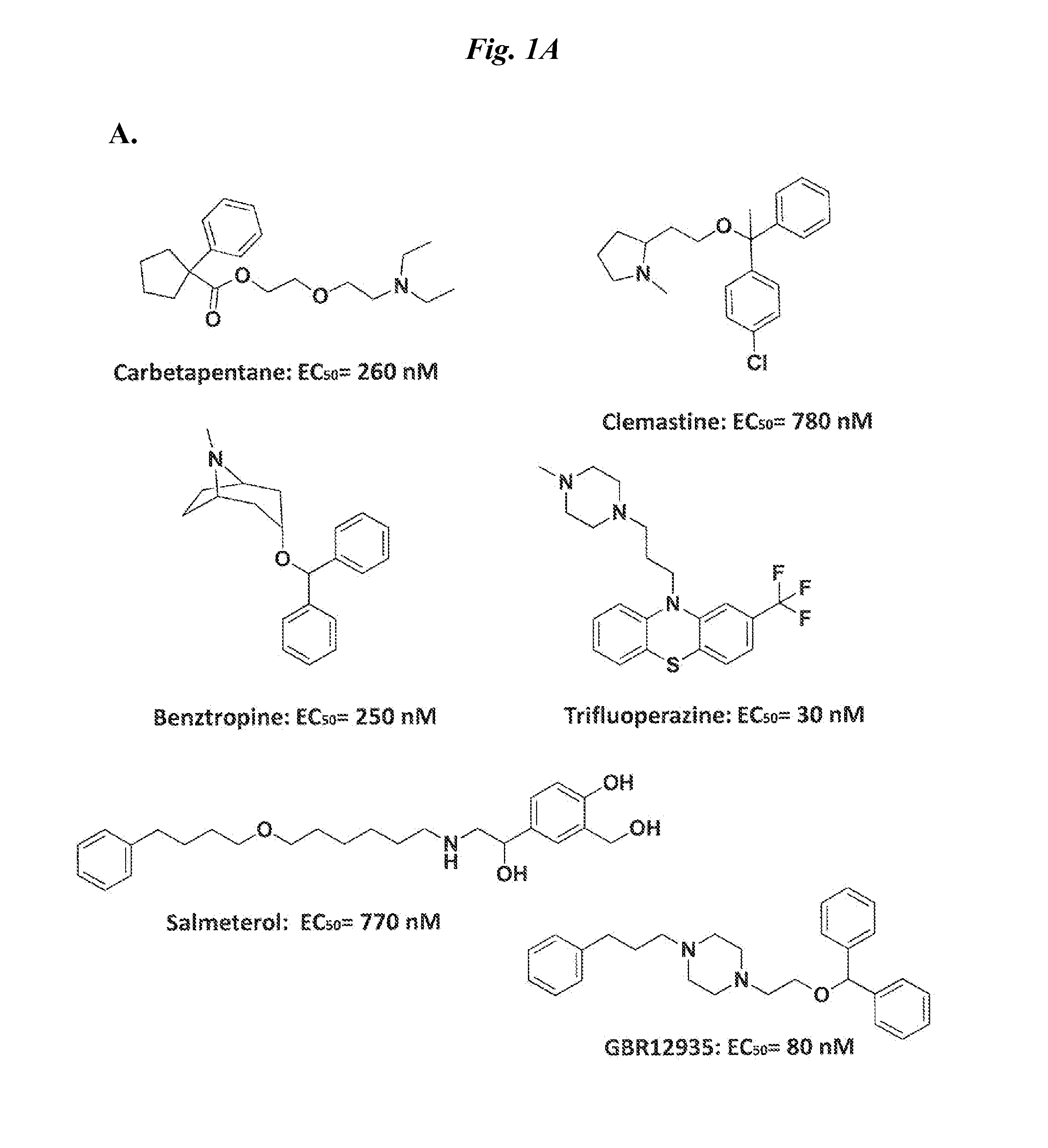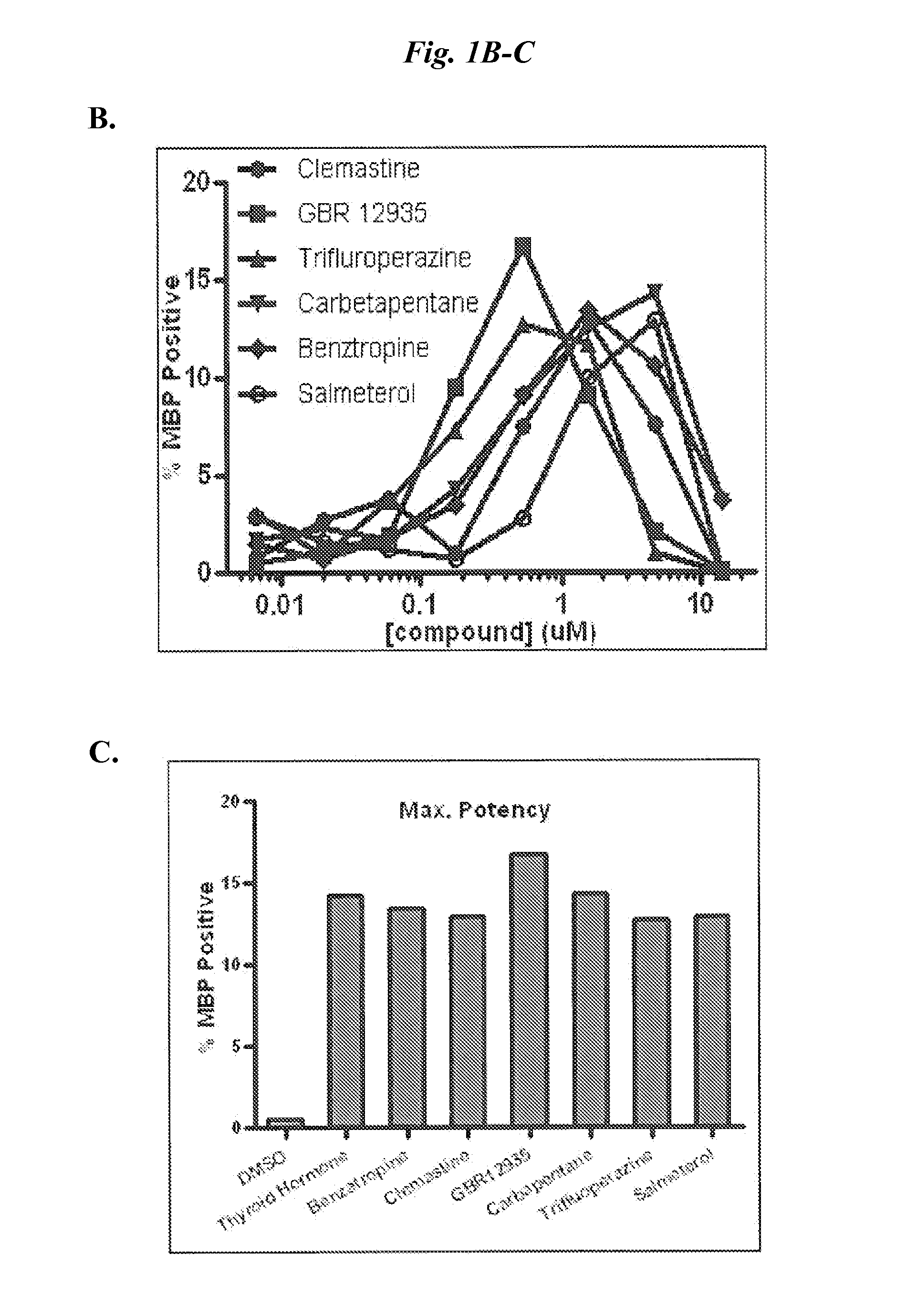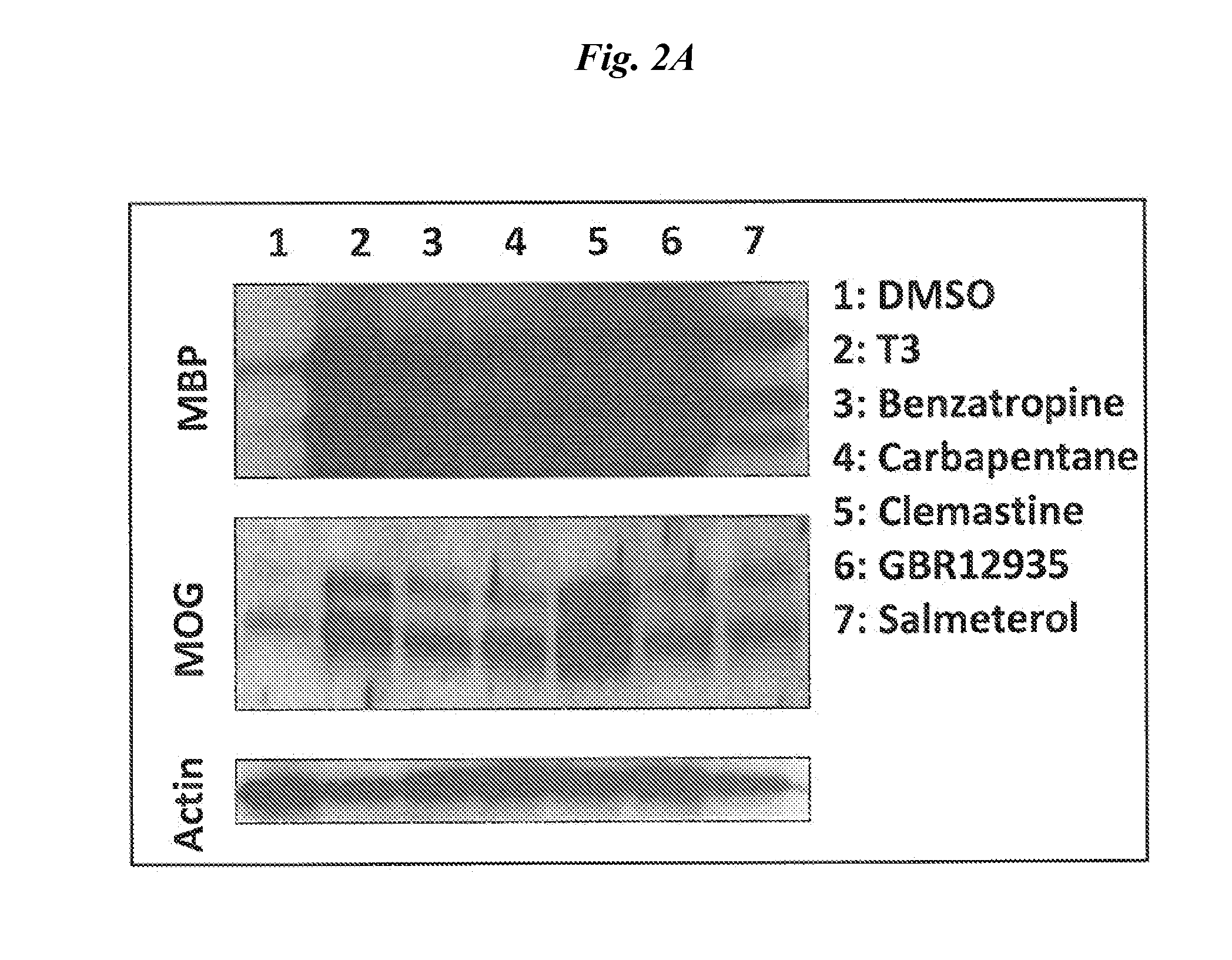Directed differentiation of oligodendrocyte precursor cells to a myelinating cell fate
a technology of oligodendrocyte precursor cells and myelinating cell fate, which is applied in the direction of antibody medical ingredients, peptide/protein ingredients, drug compositions, etc., can solve the problems of fewer effective remyelination, remyelination failure, and progressive neuronal damage, so as to increase the myelination of nerves
- Summary
- Abstract
- Description
- Claims
- Application Information
AI Technical Summary
Benefits of technology
Problems solved by technology
Method used
Image
Examples
example 1
Small Molecule Screen to Identify Inducers of OPC Differentiation
[0167]A large-scale small molecule screen was conducted to identify small molecules that promote the differentiation of oligodendrocyte precursor cells (OPCs) to a mature myelinating fate. High content imaging was used to detect in-well differentiation of rat optic nerve derived OPCs. Rat optic nerve derived OPCs were expanded en masse in OPC media containing 30 ng / mL PDGFαα. To screen for small molecule inducers of OPC differentiation, OPCs (cultured for fewer than 15 passages) were plated in poly-D-lysine coated 384 well culture plates in OPC Media containing 2 ng / mL PDGFαα and immediately treated with compounds at a final concentration of 6 μM (0.6% DMSO). Compound treated cells were incubated at 37° C., 5% CO2 for 6 days. At the end of 6 days, cells were fixed in 4% paraformaldehyde and subjected to immunofluorescence analysis. Anti-Myelin Basic Protein monoclonal antibody (a.a. 129-138, clone 1 monoclonal antibody...
example 2
Validation of Hits from Small Molecule Screen
[0169]Several classes of neurotransmitter receptor modulating agents that were identified by the primary screen were selected based on FDA approval status, known toxicity, and brain pharmacokinetics for evaluation in subsequent in vitro and in vivo validation assays. The ability of compounds to induce robust differentiation of OPCs to a fully mature myelinating oligodendrocyte cell fate was evaluated in vitro using quantitative RT-PCR, western blotting and immunofluorescence analysis techniques. The ability of compounds to induce remyelination in vivo (in the presence of inflammatory insult) was evaluated using a proteolipid protein (PLP) induced Experimental Autoimmune Encephalitis (EAE) mouse model of relapsing multiple sclerosis.
[0170]Quantitative RT-PCR (“qRT-PCR”) and Western blot analysis were performed on OPC samples that had been cultured with DMSO (negative control), T3 (positive control), benztropine, carbetapentane, clemastine,...
example 3
A Stem Cell-Based Strategy for the Treatment of Multiple Sclerosis
[0175]Studies aimed at evaluating the presence and relative densities of OPCs at sites of chronically demyelinated MS lesions indicate that it is not a failure of repopulation or migration of OPCs, but rather inhibition of OPC differentiation at sites of injury that contributes to disease progression (D. M. Chari, W. F. Blakemore, Glia, 37, 307 (2002); D. M. Chari et al., J Neurosci Res, 73, 787 (2003); G. Wolswijk, J Neurosci, 18, 601 (1998); A. Chang et al., N Engl J Med, 346, 165 (2002); T. Kuhlmann et al., Brain, 131, 1749 (2008)). As such, the identification of drug-like small molecules that selectively induce differentiation of OPCs at sites of demyelinated lesions would have a significant impact on the development of new, effective treatments for MS (D. Kremer et al., Ann Neurol, 69, 602 (2011)).
[0176]Primary rodent and human OPCs proliferate in vitro when cultured in serum-free media containing PDGF (C. Ffrenc...
PUM
| Property | Measurement | Unit |
|---|---|---|
| molecular weight | aaaaa | aaaaa |
| pH | aaaaa | aaaaa |
| concentrations | aaaaa | aaaaa |
Abstract
Description
Claims
Application Information
 Login to View More
Login to View More - R&D
- Intellectual Property
- Life Sciences
- Materials
- Tech Scout
- Unparalleled Data Quality
- Higher Quality Content
- 60% Fewer Hallucinations
Browse by: Latest US Patents, China's latest patents, Technical Efficacy Thesaurus, Application Domain, Technology Topic, Popular Technical Reports.
© 2025 PatSnap. All rights reserved.Legal|Privacy policy|Modern Slavery Act Transparency Statement|Sitemap|About US| Contact US: help@patsnap.com



